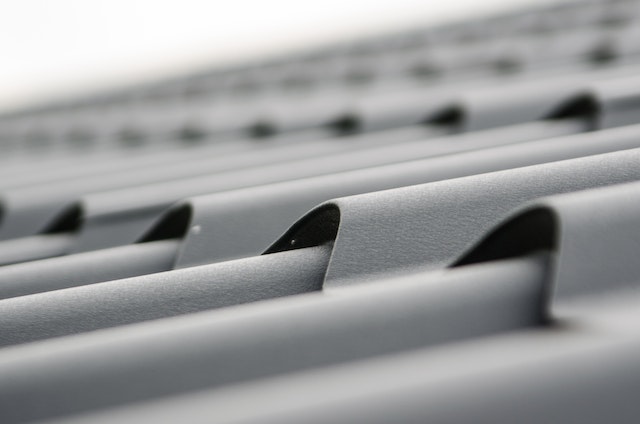Roofing Materials
When it comes to choosing the best roofing material, there are many factors that you should consider. The climate you live in and the style of your home are just a few of the considerations when deciding on a roofing material. To find the best roofing materials for your home, review the different types of materials available, ask friends and family about the type of roof on their home and get your local roof contractors opinion; after all they have the most experience in all things roof.
Roofing materials have changed quite a bit over the years and with so many new choices, many homeowners are left with many decisions. The type of roofing material plays a big role in how an old roof is repaired or replaced versus a new roof. Roofing materials also vary whether the roof is for a residential dwelling or commercial building.
New VS Old Roof Material
With the push for newer and better roof materials, homeowners have many new choices to pick from. There are numerous differences in new roof materials, and with such variety one is sure to fit any budget. The development of more environmentally friendly and cost effective roof materials has brought new life to old roof products. Frequently Asked Questions.
Residential VS Commercial Roof Materials
Residential roofs are very different from commercial roofs, which is why the materials used for a home are much different than those used for a commercial building. The slope of the roof on a residential building gives it the freedom to choose from a wider variety and type of roof material. Low slope, or flat roofs, commonly found on commercial roof buildings pose unique challenges and make finding the right roof material difficult.
Choosing the perfect roofing material for a home is an important decision, as it can significantly impact a property’s look and feel — not to mention its long-term energy efficiency and integrity. From asphalt shingles and metal roofs to clay tile and concrete, many different roofing materials are available, and understanding some of the key differences between them can go a long way in helping you choose the best option for your home.
we’ll explore the different types of roofing materials on the market and the benefits and downsides of each. We’ll also discuss some key factors to consider so that you can choose the most suitable type of roofing for your house. Lastly, here are a few FAQs to remember when deciding on your new roof.
Asphalt Shingles
Asphalt shingles are among the most popular roofing materials available and are available in a variety of colors and styles. They are affordable, installed relatively easily, and provide decent coverage against weather-related problems. On the downside, asphalt shingles may offer a different longevity than some other roofing materials, and they may not be as aesthetically pleasing either.
Metal Roofs
Metal roofs are an increasingly popular option due to their long-term durability and energy efficiency. Many metal roofs are equipped with multiple layers of protection designed to ward off rain, hail, and snow damage. On the other hand, metal roofs can be expensive and may need additional insulation if you’re in a colder climate.
Clay Tile Roofs
Clay tile roofs offer a traditional look in many colors and shapes. They are extremely durable and can last a lifetime when maintained properly. Clay tile roofs are also energy efficient and provide excellent insulation in hot and cold climates. On the downside, clay tile roofs can be extremely expensive and somewhat fragile, and their installation is usually time-consuming.
Concrete Roofs
Concrete roofs are one of the more affordable roofing options, and they are also reasonably low maintenance. They are perfect for colder climates, as concrete roofs offer excellent insulation and can last 75 – 100 years with proper care. On the other hand, concrete tiles can easily crack and discolor over time, and they tend to be quite heavy, making them better suited to certain types of house structures.
Green Roofs
Green roofs are becoming more popular as they offer a unique way to save energy and reduce your home’s environmental footprint. On top of the roofing, you can add grass, shrubs, or even succulents to help your home to regulate its temperature better and reduce foot traffic. Green roofs require extra maintenance, however, and must be replaced more often than traditional ones.
Solar Roofs
Solar roofs provide a unique roofing option, as they are designed to generate electricity for your home by capturing and converting the sun’s energy. Although solar roofs remain a relatively new option, they can provide an excellent way to cut energy costs and minimize your home’s environmental impact. That said, they can also be quite expensive and may require special installation by a qualified professional.
FAQs About Roofing Materials
Q: What is the most durable roofing material?
A: The most durable roofing material depends on your specific needs. Metal and clay tile roofs are usually long-lasting and offer strong protection against the elements. On the other hand, concrete roofs and asphalt shingles may only last for a while but can be more affordable.
Q: What is the best roofing material for a hot climate?
A: Clay tile or metal roofs are usually the best choices for hot climates, as both can provide excellent insulation. In addition, solar roofs are becoming increasingly popular in hot climates as well, as they offer a way to generate energy for your home while reducing your carbon footprint.
Q: What is the most cost-effective roofing material?
A: Asphalt shingles are usually the most cost-effective roofing material, as they are relatively cheap and easy to install. However, concrete and metal roofs can also be quite affordable, depending on the specific materials and design you choose.
Conclusion
When it comes to choosing the best roofing material for your home, there are a lot of factors to consider. Asphalt shingles are usually the most affordable option but may offer a different level of longevity than metal roofs or clay tile roofs. Concrete roofs are cost-effective, although they may need extra insulation in colder climates. Lastly, green and solar roofs offer unique ways to save energy and reduce your home’s environmental impact. Ultimately, the final decision should come down to your specific needs and the roofing materials that address these requirements.
 Call Us Virginia: 703 254.6599 Maryland: 301. 770.0552
Call Us Virginia: 703 254.6599 Maryland: 301. 770.0552
Set Up a Complimentary ‘No Pressure’ Consultation.









